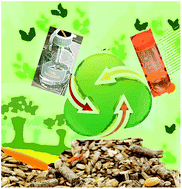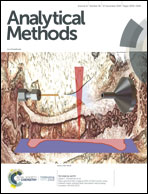Greening microwave-assisted acid digestion of animal feed samples
Abstract
Nowadays it is well-established that microwave-assisted digestion of organic matrices can be efficiently performed in closed vessels using dilute nitric acid solutions. In this work microwave-assisted sample preparation procedures compatible with green chemistry recommendations were developed for grains and cereals used to raise swine. Digestion efficiency was evaluated by determining the residual carbon content, which was lower than 3.5%. Residual acidity was also evaluated and was lower than 0.65 mol L−1. Calcium, Co, Cu, Fe, K, Mg, Mn, Mo, Na, P, Sr, and Zn were determined using either ICP OES or ICP MS depending on respective concentrations. Certified reference materials were evaluated and most determined concentrations were between 80 and 120% compared to certified values. Finally, after analytical measurements an apparatus for recovering nitric acid by sub-boiling distillation was used. To the best of our knowledge, this is the first application of sub-boiling distillation for recovering nitric acid of digests. Then, the purified acid could be reused in further digestions. This is a promising alternative for increasing the green chemistry attributes of trace inorganic analysis. The combination of these strategies, i.e. dilute nitric acid digestion followed by recovery of the acid digests, represents steps towards green chemistry approaches: “reduce the use, recycle and reuse”, strictly following the major green chemistry recommendations.

- This article is part of the themed collection: Celebrating Latin American Talent in Chemistry


 Please wait while we load your content...
Please wait while we load your content...